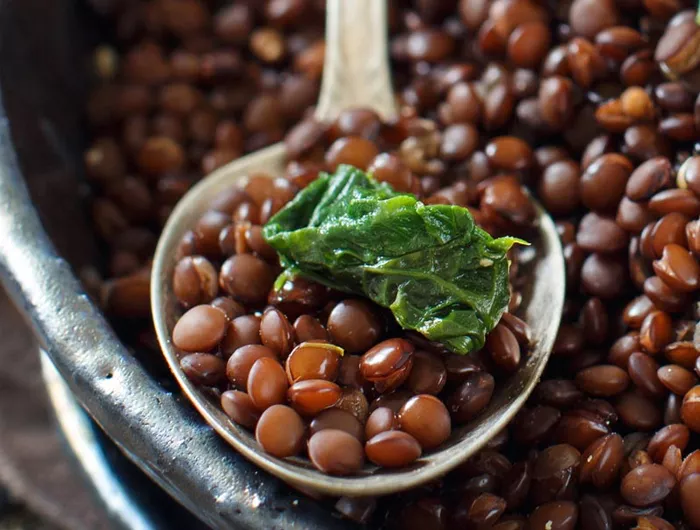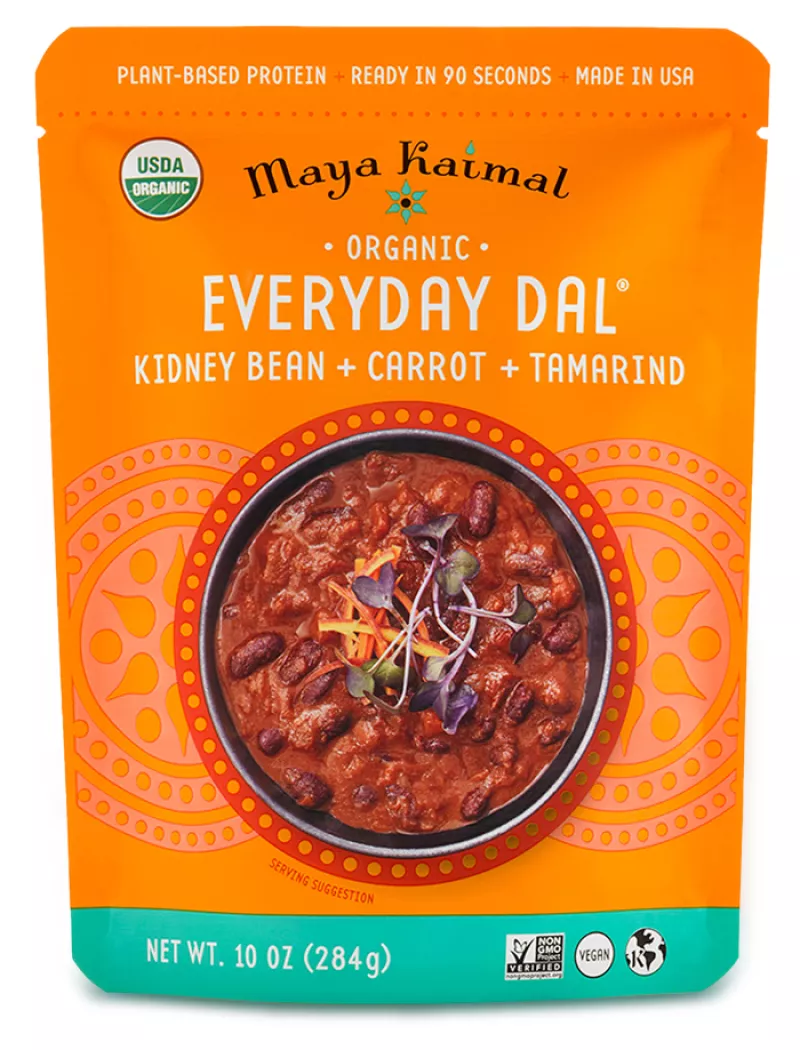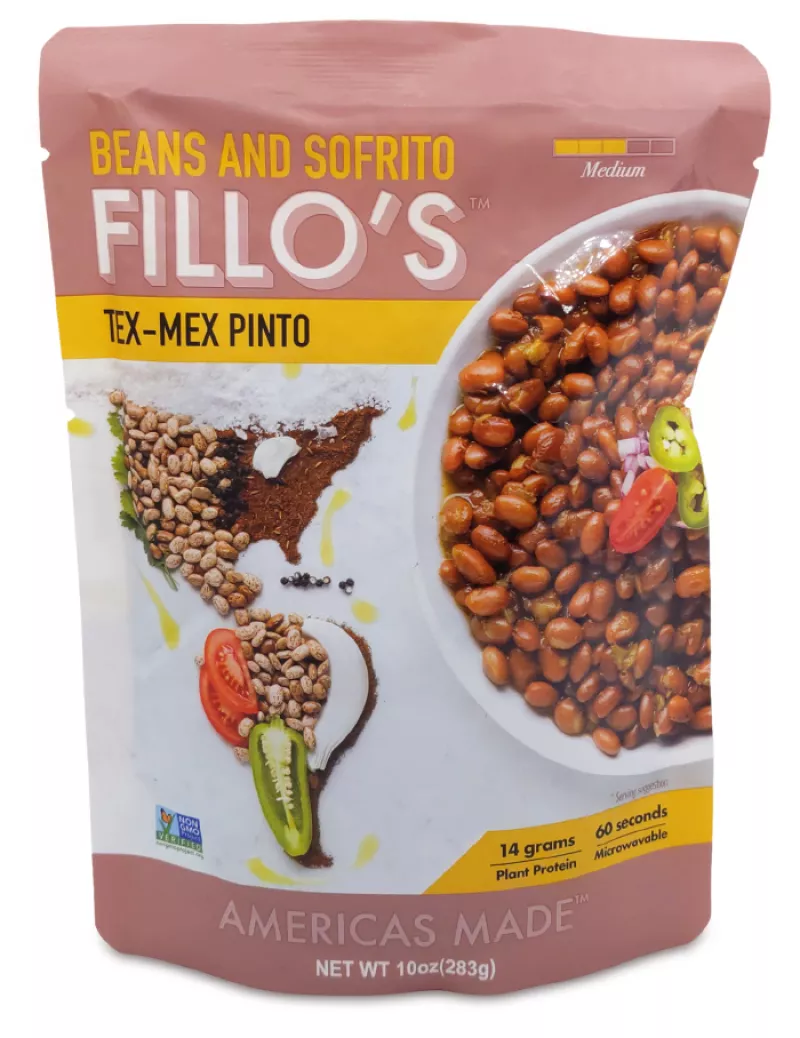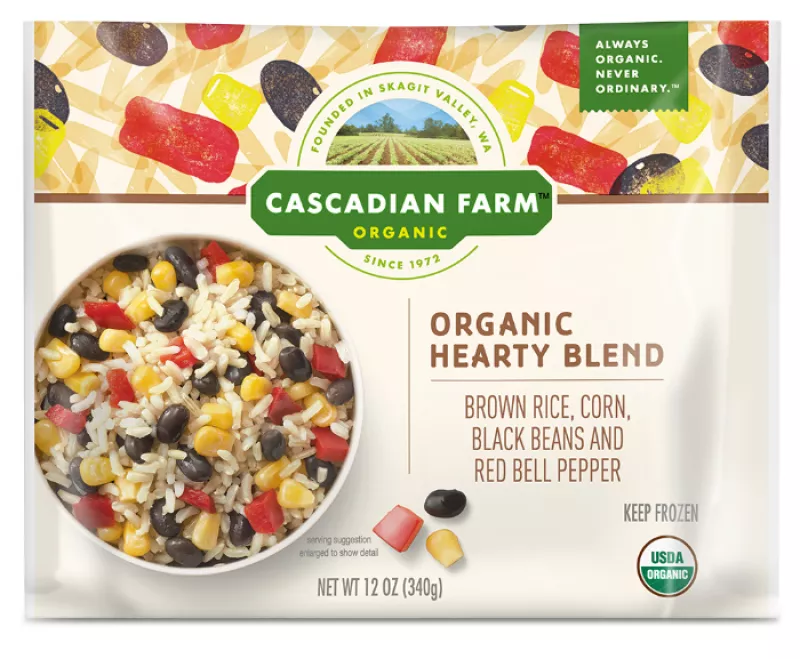Got beans? Our favorite supermarket finds

katrinshine - stock.adobe.com.
Looking for more plant protein? Beans make it easy. When we say beans, of course, we mean beans, lentils, chickpeas, and split peas. All legumes are superstars.
They’re a solid source of fiber and plant protein. They’re also packed with other nutrients (hello potassium, magnesium, folate, zinc, and iron!). And they’re easy on the planet.
Lentils to love

All legumes are good legumes. But lentils steal the show.
For starters, they’re equally at home in a salad, side dish, soup, or stew.
Next up: speed. Most lentils take just 15 to 25 minutes to cook. (Sprouted brands like TruRoots can cut that in half.) Dry beans, on the other hand, typically hover around 45 to 75 minutes after an overnight soak. Lentils? No soaking needed.
Even quicker: stockpile pre-cooked pouches like Target’s Good & Gather 90 Second Black Lentils or Trader Joe’s refrigerated (salted) Steamed Lentils. Just heat ’n eat.

Ready to sample the rainbow?
- Brown or green lentils. The go-to for soups and stews.
- French green lentils. These dark-green gems hold their shape after cooking, so they’re ideal for salads and pilafs. Look for “French,” “French style,” or “Le Puy” on the bag.
- Black lentils. Like their French kin, black (aka “beluga”) lentils stay firm when cooked. And that dazzling black, caviar-like look!
- Red or other split lentils. Got just 10 or 15 minutes? Red lentils (like split peas) have their skins removed, so they’re soft and quick cooking. That makes them the perfect lentils for dal.
Spice it up

“This is our riff on ‘dal,’ the staple bean dish,” says Maya Kaimal Organic Everyday Dal. “We’re inspired by the countless variations dreamed up by Indian cooks.”
Flavorful dals treat legumes right. Try Maya’s Kidney Bean + Carrot + Tamarind, Black Lentil + Tomato + Cumin, or Green Garbanzo + Corn + Coriander. (Skip the “coconut” varieties, so you can dodge their extra saturated fat.)
Another plus: the sodium in those three dals ranges from 310 to 350 milligrams per serving (half the pouch, or about 2∕3 cup). Most varieties of other brands, like Tasty Bite, hit 450 to 490 mg. To cut the sodium in any packaged dal (or curry), serve it over unsalted brown rice.
Or stir in 1½ cups of cooked red lentils or no-salt-added beans, which also boosts the protein and fiber. There’s ample sauce to go around.
To play it safe, take your food out of “microwaveable” pouches before heating to lower the risk that any chemicals in the package end up in your mouth. Use a microwave-safe glass or ceramic bowl (or the stovetop) instead.
Tacos & beyond

A “sofrito” is a base used to season beans, rice, stews, and other dishes in Latin America and the Mediterranean. It’s made by sautéing and then slowly cooking finely chopped vegetables (think peppers, onions, tomatoes, garlic) in olive oil to concentrate their flavor.
And that’s what makes every pouch in Fillo’s Beans and Sofrito line a real standout. It’s hard to believe that these beans didn’t spend the whole day simmering on your stovetop. The varieties range from Cuban Black Beans to Mexican Mayocoba (a mild-flavored pale yellow bean). And the sodium—most have around 400 milligrams per half pouch, or about 2∕3 cup—isn’t too bad for something that can be the star of your meal.
Toss ’em in tacos, salads, or bowls with veggies, avocado, etc. No Fillo’s around? Try A Dozen Cousins Cuban Black Beans.
Freezer finds

Don’t limit yourself to the supermarket’s shelf-stable aisles. Odds are, the freezer case has some winners...especially for the lucky folks with a Trader Joe’s nearby.
- Trader Joe’s Melodious Blend. Its half dozen ingredients are music to our ears: green lentils, red lentils, green garbanzos, tomatoes, and extra-virgin olive oil, plus salt. (Each serving—it cooks down to about ¾ cup—has 370 mg of sodium.) Ta-da! Instant side.
- Trader Joe’s Soycutash. This updated succotash starter mixes corn and red bell peppers with edamame (soybeans) instead of limas.
- Cascadian Farm Organic Hearty Blend. The Brown Rice, Corn, Black Beans and Red Bell Pepper is both its name and nearly all of its ingredients. (There’s also a touch of salt—enough to supply just 85 mg of sodium in a 2∕3-cup serving.) Let the bag sit in your freezer until you’re ready to sauté a quick side or are looking for an instant starter for a Mexican-inspired bowl or salad.

Upgrade your grains
If your go-to side dish is rice or some other grain, you can do better:
- Let in the legumes. Beans, lentils, and chickpeas aren’t just plant-based protein. They also supply fiber-rich carbs. So why not sub them for whole grains once in a while? Try serving chicken or fish on a bed of black lentils.
- Mix it up. Beans & rice are nice, but how about branching out? What about lentils on a bed of bulgur, wheat berries, or another whole grain? Pouches like Whole Foods’ 365 Spelt, Green Lentils & Long Grain Brown Rice make it easy for you. (They also salt everything for you, to the tune of roughly 230 mg of sodium in every half cup. So if you’re not in a pinch, why not DIY?)
Beany rotini

Red lentil rotini, anyone? Green lentil penne?
They and their cousins from brands like Tolerant Organic and Barilla have just one ingredient: legume flour. That means 6 to 8 grams of fiber per 2 oz. serving (about 1 cup, cooked). White pasta has just 3 grams; whole wheat has 7.
The legume-only pastas also supply 11 to 14 grams of protein—more than white or whole wheat’s 7 or 8 grams. And if you’re gluten-free, well, so are these pastas.
The downside: legume pastas can overcook—and turn gummy—in a flash. So check the cooking time before you turn on the burner.
Our favorites: chickpea or red lentil pasta in short shapes (like penne or rotini).
Hold the salt

Need some beans for that recipe?
Look for less salt. If you’re starting with a can, carton, or pouch of unseasoned cooked beans, keep in mind that just a half cup of most brands has 250 to 500 milligrams of sodium. Draining and rinsing only cuts that by about a third. Instead, look for “low sodium” (140 mg or less) or “no salt added” on the label.
Or can the can. Use our tips to perfectly cook your own from scratch. Rule of thumb: It takes 1½ to 1¾ cups of cooked beans to replace a 15 oz. can or pouch. And a pound of dry beans (about 2½ cups) makes 6 to 8 cups.
Nutrition Action doesn’t accept any paid advertising or corporate or government donations. Any products recommended by Nutrition Action have been vetted by our staff and are not advertisements by the manufacturers.
Photos (top to bottom): katrinshine/stock.adobe.com, Target, Bob's Red Mill, Maya Kaimal Foods, Fillo’s, Trader Joe’s, Cascadian Farm, Lindsay Moyer/CSPI, Tolerant, Whole Foods Market.

